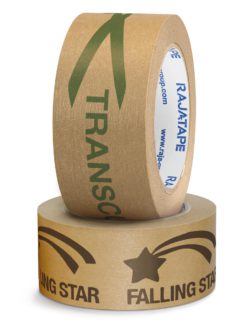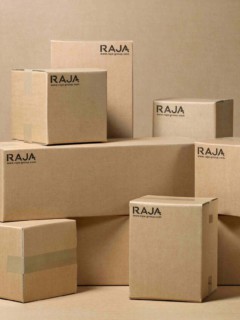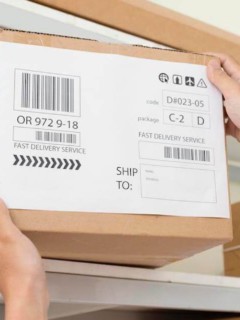Courier parcels are not only parcels, but also letters in various sizes in which documents are sent. Although there are documents that cannot be sent by courier or post, most of them (the general pool) can be sent without problems. It is important to purchase suitable envelopes and any security features. How should documents be secured for shipment?
How do I secure documents for transport?
It is important to ensure that your documents are properly secured for shipment. They should be packaged in a durable envelope that offers ideal protection against moisture, mechanical damage and unauthorised opening. An example is an LDPE-type foil envelope, which will further protect the documents being transported from bending. Alternatively, you can invest in an envelope with bubble wrap (lining the interior). If you necessarily want a paper envelope (preferably made of thick paper), you should wrap the papers in foil.
However, that is not all. The question of how to secure documents in transit is more complex. It is a good idea to first – before packing – place the documents in a plastic T-shirt or rigid folder. In combination with a sturdy and durable envelope, you can expect secure shipping. Important papers should not be placed directly into an envelope (especially a paper envelope). There is a risk that – due to contact with moisture or rain – the documents will quickly become damaged (e.g. softened, ink dissolved).
An interesting option is to buy special warning labels, informing that important documents are inside a parcel or letter. Seeing the “Documents inside” symbol, the courier will know how to handle the parcel and where to put it.
You must remember that carriers are not responsible for any damage to the letter caused by improperly securing the parcel. If the documents are exceptionally important, it is worth taking out additional insurance – in the event of damage to the transported papers, you can count on high compensation to compensate for the loss. Many senders also choose to buy an express delivery option, thanks to which they can count on fast and efficient delivery of their letter.
How do I send documents? The best envelopes for sending documents
Packing important documents in ordinary paper documents is a risk. It is possible for the interior to be damaged (e.g. by mechanical damage, moisture) and for the contents to be discovered (simply open the envelope gently and then stick it cleverly together).
Carriers and most shippers agree – the best envelope for sending documents is the LDPE envelope. It is made from strong, three-layer LDPE film, which is resistant to adverse weather conditions. In addition, this type of envelope has lateral printing on the seal, which is very good protection against unintentional opening. The aforementioned envelope is part of the so-called courier envelopes. Other types of packaging include bubble envelopes, foil envelopes, cardboard envelopes, business envelopes, transparent envelopes and cardboard tubes. Check here where to buy courier envelopes.
Another type of document envelope is air envelopes, often used in the e-commerce industry. These are designed for sending fragile and delicate materials (like papers). They are padded with bubble wrap and have a waterproof pouch.
And don’t forget the traditional business (office) envelopes. This packaging is ideal for sending documents. It is worthwhile for you to know the basic rules on how to address business envelopes. When sending letters, it is important not only to secure the contents, but also to address them correctly.
Envelopes at RAJA – wide selection, different applications
Courier envelopes can be easily ordered online. Express delivery of bulk quantities is the dream of every office worker. There is no need to go to the post office and buy individual envelopes – just a few clicks. There are many types of courier envelopes available at RAJA. The most important of these are foil envelopes, transparent envelopes, cardboard tubes and – of course – the most popular bubble envelopes. On each of these packages, you can easily place delivery notes, sales invoices and documents for the courier.
How do you additionally secure documents for shipping?
Wondering how to pack parcels and letters securely? Invest in inconspicuous accessories. Accessories that come in handy when sending important documents are all kinds of security tapes, stick adhesives. The latter guarantee permanent, additional security for the envelope. Moreover, they do not interfere with the overall aesthetics of the package (they are transparent).
Sometimes, packing tape with extremely strong adhesive strength and resistance to extreme temperatures is also used. Although such a product is usually used for securing and packing larger parcels, it will also work well for sealing letters. Many packing tapes are transparent – their presence on the parcel will be almost unnoticeable.
All of these products are the perfect answer to the question of how to secure documents in transit.
Can all documents be sent by courier?
There are types of documents that cannot be transported by courier – all courier companies have made a commitment to this. These are so-called prohibited items in transport. The following are therefore not shipped:
- securities,
- identity papers
- tender, accounting and commercial documents,
- means of payment (e.g. vouchers, cheques, cash, bonds, bills of exchange, stamps, vignettes, shares).
List of prohibited documents in a parcel versus courier companies
In the previous section, the list of prohibited documents in shipping was given in general terms. It is worth bearing in mind that each courier company defines specific conditions. How do I send documents with individual carriers?
At the most popular carriers (UPS, DPS, Poczta Polska), the list of prohibited goods in the shipment is identical. These include tender documents, passbooks, identity cards, contract terminations, commercial offers, pre-paid cards and securities.
At the FedEx courier company, it is prohibited to send mainly certificates and negotiable securities. At InPost, it is categorically forbidden to send securities and other documents of a payment nature. At GLS Poland, the list of prohibited goods includes payment documents, cheques, payment or credit cards, securities, tender documents, commercial offers, accounting documents, excise prints.
As for theremaining documents, which are not subject to transport restrictions (they are not on the list of prohibited goods for shipment) – they can be sent by post or courier without any problems.
Why are courier companies reluctant to take on the shipment of sensitive documents?
Couriers prefer to avoid transporting extremely sensitive documents because of the lack of a 100 per cent guarantee that the entire consignment will reach the addressee in full. If the letter contains documents that are excluded from transport, the courier company is unlikely to take responsibility for any losses. It is worth being aware of this before you start thinking about how to send valuable, confidential documents.
Sometimes important documents need to be delivered at a specific time. However, punctuality of delivery is a relative value. Sometimes everyday situations, difficulties on the road or random accidents mean that a parcel will not reach its addressee at the specified time. With most courier companies, it is possible to complain about the untimeliness of the delivery (and you can therefore apply for a refund). However, much depends on the contents. If the letter contained important time-sensitive documents, the possible compensation may not be high enough to cover the loss to the recipient and the sender. It can be said that the damage will be directly disproportionate to the amount that can be received during a successful claim.














